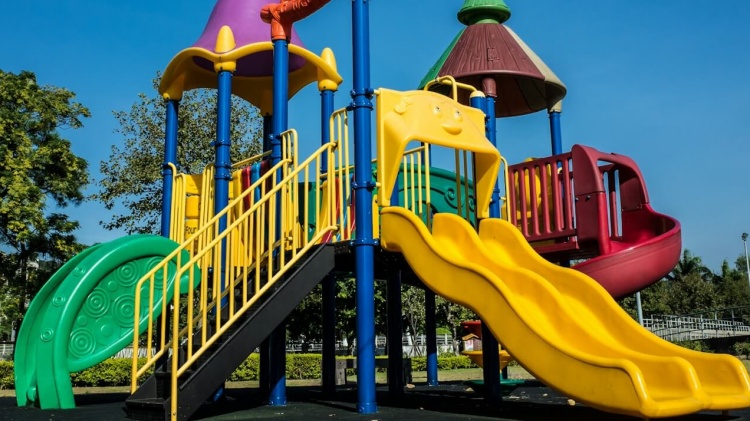10 Innovative Indoor Slide Designs for Your Home or Office
Adding a slide to your home or office is a fun and unique way to spice up your interior design. Indoor slides are great for

Installing an indoor slide is a fun way to add excitement to any home or office space. However, like any fixture, slides require proper care and maintenance to stay in excellent condition over years of use.
This expanded article will provide helpful tips for keeping your indoor slide performing smoothly and looking its best. We’ll cover creating a maintenance routine, performing thorough inspections, cleaning techniques for various materials, solving common issues, safety checks, and replacement tips to extend your slide’s lifespan. With some simple DIY care, your indoor slide will continue thrilling sliders for decades to come!
To make slide care easy, develop a clear-cut schedule detailing regular maintenance tasks:
Set aside time each month to fully inspect your slide and address any minor issues. Check fasteners, rails, stairs and the sliding surface. Make a light surface clean.
Do a thorough slide deep clean 4 times per year. Scrub surface grime, disinfect high-touch areas, hose off outdoors. Increase cleaning frequency based on usage and environment.
Conduct a comprehensive annual slide inspection, tuning, and restoration. Lubricate and polish sliding surfaces. Renew protective finishes and coatings. Replace worn parts.
Fix any damage like splits, holes or loose fixtures immediately to prevent accelerated deterioration. Don’t delay safety-related fixes.
Planning maintenance into your home calendar will help ensure your slide gets the regular care it needs. Enlist the whole family to help inspect and wash!
Here are key components to check for during monthly inspections:
Inspect the entire slide structure for loose joints, broken parts, cracks, holes, or splintered areas needing repair. Look for signs of loosening, rot or rust.
Scan the sliding surface for abrasions, splinters, sharp edges or protrusions that could cause injuries, snag clothing or inhibit sliding.
Ensure stairs, ladders, and slide entrance/exit points remain securely attached with no wobbles or movement when shaken. Check for broken rungs or treads.
Confirm side barriers and guardrails are intact. Ensure exit padding remains adequate. Replace worn safety grip tape on steps.
Verify all anchors into walls and floors are tight. Make sure load-bearing components like braces and joints remain sturdy with no cracks.
Look for dirt accumulation, grime buildup, mold/mildew growth, or stubborn stains needing cleaning attention. Check corners and hidden crevices.
Address any issues discovered immediately to keep the slide safe, hygienic and operating smoothly for years.
Here are handy tips for deep cleaning your indoor slide 4 times per year:
Use a soft bristle broom to sweep the stairs, landings and slide surface. This removes loose dirt, leaves and debris.
Spray handrails, banisters, ladder rungs and slide access points with antimicrobial disinfectant. Let sit for 5 minutes before wiping.
Use mild soap and warm water applied with a soft sponge or cloth to scrub the slide bed. Rinse thoroughly using a hose for outdoor slides.
Use a stiff nylon brush and diluted cleaner to scrub slide entrance steps and platforms to remove deeply ingrained grime and scuff marks.
Use a magic eraser, soft scrub pads or toothbrush to gently lift stains on plastic, acrylic or fiberglass slides. Avoid harsh chemicals.
Vacuum staircase coverings and landing area carpeting to keep fibers debris-free. This prevents mold and mildew growth.
Ensure slide drainage gutters, tubes and exit points are clear of leaves and debris clogs that can pool water.
Thorough periodic deep cleaning keeps your slide sanitary, safe and looking like new while protecting users’ health.
During inspections, you may discover minor issues needing quick fixes:
Add rubber cushions or adhesive foam pads to metal or plastic slides as needed to muffle noise. Felt furniture pads also help reduce reverberating rackets.
Rejuvenate plastic slides’ color using vinyl and plastic repair compounds. Followed by applying a UV-resistant protectant wax or sealant.
Apply a thin layer of liquid wax, silicone spray or pipe lube to plastic, acrylic and fiberglass slides to reduce friction and maintain fast speeds.
Lightly sand splinters on wooden slides and apply a new protective urethane or marine varnish finish. Fill cracks with wood filler.
Increase traction on slippery slide steps by applying textured safety grip tape designed to meet building codes.
On metal slides, remove rust using naval jelly or sandpaper. Spot paint with corrosion-inhibiting enamel to match slide color.
With vigilant monitoring and prompt minor fixes, issues won’t escalate into major problems down the road.
For older slides, these revitalizing upgrades restore performance, appearance and safety:
Refinishing the sliding surface with new plastic, fiberglass or wood overlay materials renews a worn slide bed.
A fresh coat of outdoor gloss or epoxy paint gives tired wooden slides an aesthetic facelift while protecting the wood.
Industrial metal slides may periodically need reconditioning, which includes removing rust and dents before priming and repainting with durable finishes.
Swap out damaged wooden handrails for new powder-coated aluminum or stainless steel rails that will last longer outdoors.
For badly damaged slide beds, replacing the entire slide piece with a new bed made of quality stainless steel, thick plastic or molded fiberglass may be needed.
Consider replacing old plastic barriers with newer impact-resistant polycarbonate panels. Renew entrance padding.
With proper routine care and periodic upgrades, your quality indoor slide can stay safe and last for decades of happy sliding!
Use these targeted cleaning methods for specific indoor slide types:
Along with cleaning, prioritize these safety enhancements:
Make safety the number one priority for a long service life free of injuries. Leave riding to the experts!
Caring for your indoor slide doesn’t need to be difficult or time-consuming. By following a thorough maintenance routine, gently yet effectively cleaning various slide materials, and making timely minor repairs and safety upgrades, your slide will operate smoothly for years of family fun.
Indoor slides are cherished fixtures that benefit from specialized preventative care and maintenance. With some simple DIY effort, you can keep your slide looking and performing like new. Take time to appreciate the lasting joy your indoor slide brings, and return the favor through proper care. A well-maintained slide will mean endless safe thrills for kids and kids at heart!
Regular slide care is the key to preserving quality, safety, and enjoyment. Who’s ready to grab a rag and keep that slide in tip-top shape? Wheee!

Adding a slide to your home or office is a fun and unique way to spice up your interior design. Indoor slides are great for
Installing your own indoor slide at home is an exciting DIY project that can add a unique touch of fun to your living space. With

Having your own indoor slide is an exciting way to add some fun and convenience to your home. Slides allow for quick transportation between floors,

For many adults, the memory of joyfully sliding down playground slides as children evokes happy nostalgia. The thrill of finally reaching the top, followed by
Adding a slide to your home or office is a fun and unique way to spice up your interior design. Indoor slides are great for
Installing your own indoor slide at home is an exciting DIY project that can add a unique touch of fun to your living space. With

Installing an indoor slide is a fun way to add excitement to any home or office space. However, like any fixture, slides require proper care

Having your own indoor slide is an exciting way to add some fun and convenience to your home. Slides allow for quick transportation between floors,
Copyright © 2024 babyindoorslide. All Rights Reserved.